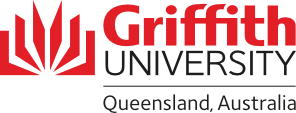Please note that this is an on-going project.
Project Description
My project aims to build national scale monitoring programs of the wildlife we love (African lions, elephants, leopards etc.). These monitoring programs give us an idea of the pulse of these populations and how they respond to conservation action. A key way to achieve resilient conservation monitoring at scale is to bring the people that live alongside these animals to the science table. In 2022 we laid the foundation for such a program by training over 100 Ugandans and international collaborators in the latest scientific monitoring techniques of lions, leopards and hyenas across Uganda. Our monitoring team consisted inter alia government wildlife rangers, independent scientists, NGO staff, and even trophy hunters. We collectively surveyed Uganda’s most important protected areas (6 parks) and generated the most comprehensive national census of large carnivores ever implemented in Uganda. The process was collaborative, transparent, and empowering in that people that wouldn’t have traditionally had a chance to engage in such surveys implemented them firsthand.
Project Personnel and Beneficiaries
Over 100 collaborators across multiple industries and activities including the Ugandan government, NGO’s in the conservation sector, scientists from international and local universities, local university students, private donors such as the lion recovery fund – these are just a few.
Outcomes to Date
The results of our national census will be published in the form of 2 scientific papers later this year (2023) and the results are going into the new National Action Plan for Large Carnivore Conservation which Griffith University helped to sponsor:
Project Significance
Our project intersects multiple SDGS including:
Goal 4: Quality Education – we provide the latest training to people living in lion and carnivore landscapes across Uganda on how to count and monitor these species.
Goal 5: Gender Equality – Our project does not discriminate on gender basis – we invite everyone who lives in these places to come and learn and be involved in conservation monitoring.
Goal 8: Decent work and economic growth – Our project worked with the Uganda Wildlife Authority (Ugandan government) to top up the salaries of rangers to be involved and collect data on large carnivore status. This supplemented their existing income.
Goal 10: Reduce Inequality – We provide everyone in the landscape the chance to be involved in carnivore monitoring, monitoring of the animals that they have in their back yard and often causes damage to livelihoods.
Goal 15: Life on Land – Our project highlights the critical importance of uniquely charismatic species of endangered and threatened animals like lions and leopards. We have very little information on how these species are actually faring against a backdrop of tons of money going into their protection.
Goal 17: Partnership for the goals – We believe that working together builds nodes of opportunity for collaboration and partnership. Carnivore conservation is fiercely political – our work helps to strengthen the bonds of collaboration rather than non collaboration.
Related Link
External link to https://www.youtube.com/watch?v=y2QDfdkeV9k&t=33s

